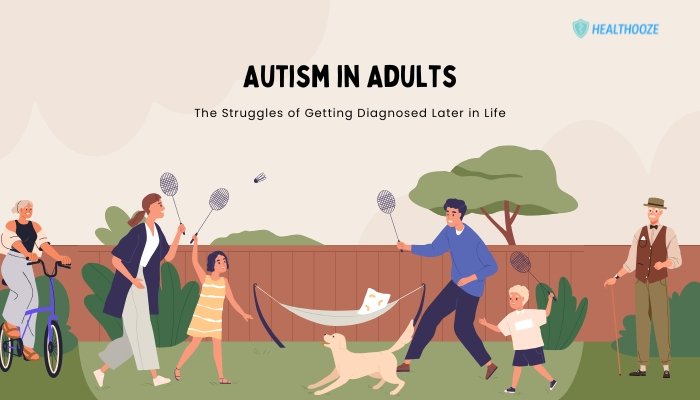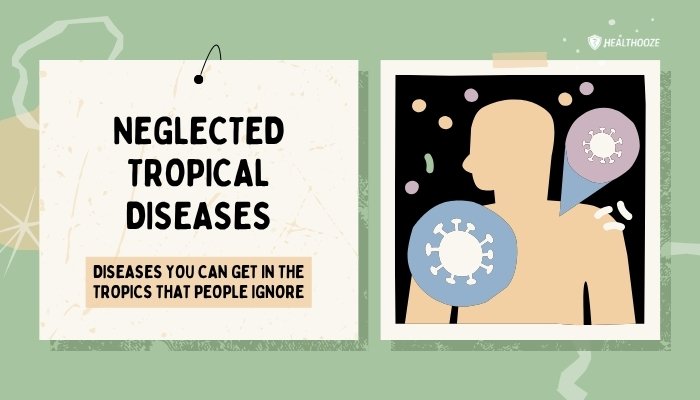Introduction
Chronic Fatigue Syndrome, also known as Myalgic Encephalomyelitis (ME/CFS), is a long-term condition marked by profound exhaustion. This form of fatigue is not the usual tiredness that arises after a busy day.
Instead, it is an all-consuming weariness that does not improve with normal rest. Patients may feel severely drained after minimal effort, with the fatigue often lasting for more than 24 hours post-activity—a symptom called post-exertional malaise (PEM).
Despite this severe impact, ME/CFS is frequently misunderstood. It lacks clear diagnostic tests or outward signs like casts or wheelchairs, which can lead to doubt from others. Family, friends, employers, and even healthcare professionals may not recognize the severity of a patient’s limitations because they “look fine.”
Consequently, many people with ME/CFS face skepticism about their symptoms and frustrations in searching for effective help.
This article explains why ME/CFS remains poorly understood, covering how it is defined, why it is hard to diagnose, and how cultural attitudes complicate public perceptions. It also discusses steps toward more accurate diagnosis, supportive care, and a better understanding of this debilitating illness.
By exploring the reasons ME/CFS is misunderstood, we can build a foundation for more informed, empathetic health care and social support.
Defining ME/CFS
Core Symptoms
ME/CFS is often approached as a cluster of symptoms rather than a single hallmark sign. The primary complaints usually include:
- Severe, Unrelenting Fatigue: This exhaustion persists for six months or longer, cannot be explained by another condition, and does not improve with rest.
- Post-Exertional Malaise (PEM): An intense “crash” following mental or physical effort that can last days or weeks.
- Unrefreshing Sleep: Individuals wake feeling just as tired—or even more exhausted—than when they went to bed.
- Cognitive Difficulties: Commonly described as “brain fog,” with trouble focusing, processing information, or remembering details.
- Orthostatic Intolerance: A drop in energy and possible dizziness or rapid heartbeat when standing up for prolonged periods.
Many also experience headaches, muscle aches, sensitivity to light and sound, and digestive issues. Yet, each patient’s symptom combination varies in severity and scope, making it tough to form one neat picture.
Terminology: ME vs. CFS
“Chronic Fatigue Syndrome” has been the dominant term in many regions, while “Myalgic Encephalomyelitis” emphasizes neurological and inflammatory aspects. Some advocacy efforts combine the two terms into ME/CFS. Many people with the condition feel that simply calling it “chronic fatigue” trivializes their suffering, since fatigue can sound like normal tiredness. They argue that “myalgic encephalomyelitis” captures the serious neurological and systemic nature of the illness.
Over the years, these naming debates have underscored the biggest challenge: medical professionals still lack consensus on the exact triggers and mechanisms of ME/CFS. Without a single defining test, patients may move between different specialists and a variety of terms before arriving at a plausible diagnosis.
Why ME/CFS Is Misunderstood
- Stigma of “Just Being Tired”
The word “fatigue” can be misleading. Everyone feels tired at times, and few people realize how severe and disabling ME/CFS exhaustion can be. It is not just staying up too late or needing a vacation—it is a deep inability to function, sometimes after minimal effort. This misperception fuels stigma and the belief that patients should simply “push through” or “be more motivated.”
People who do not see outward signs of serious illness may assume the person is exaggerating. Some interpret repeated mentions of exhaustion as laziness or an excuse to avoid responsibilities. This attitude persists not only in social circles but also in certain medical settings, further straining patient-provider trust.
- Lack of a Definitive Biomarker
Medical conditions with a clear lab test or imaging result—like broken bones on an X-ray—are easier to legitimize. In ME/CFS, many standard tests (blood counts, organ function panels, imaging scans) can come back normal. Even though research points to immune dysfunction, abnormal energy metabolism, and possible viral triggers, there is no single, universally accepted biological marker.
Consequently, some doctors remain unsure about diagnosing ME/CFS. Patients may be told “everything looks fine,” leaving them in limbo. In certain cases, they might receive psychiatric labels, which sometimes ignore physical underpinnings. This confusion can lead to a lack of systematic research funding, since policymakers often direct resources toward conditions with more concrete diagnostic criteria.
- Overlapping Conditions
ME/CFS symptoms overlap with those of other illnesses, including fibromyalgia, autoimmune disorders, and mental health issues like depression or anxiety. While comorbidities are common, the overlap can blur distinctions. For example, chronic pain or insomnia can belong to multiple conditions, making accurate diagnosis an elaborate process of ruling out possibilities.
Patients frequently bounce between different specialists (rheumatologists, neurologists, infectious disease experts, mental health professionals) who address certain aspects but cannot always unify the findings. This disjointed approach leaves the root cause uncertain and can prolong diagnostic delays.
- Historical Disregard
The first recognized outbreaks of ME/CFS-type illnesses came to public attention in the 1980s, often labeled in media as “yuppie flu” because many who reported symptoms were young, middle-class professionals. Such pejorative labels implied the illness was psychosomatic or stress-induced. This dismissive treatment overshadowed further study and hindered acceptance of the condition as a legitimate physiological disorder.
Though knowledge has improved since then, echoes of that bias remain. Anecdotal accounts from patients detail how doctors dismissed them with remarks like “It’s all in your head,” or “Try exercising more.” These experiences compound the psychological burden, leaving patients feeling ignored or invalidated.
- Gender Bias
ME/CFS affects both men and women, but surveys often show a higher proportion of female cases. Unfortunately, women’s health complaints have historically been taken less seriously, labeled as hysteria or emotional imbalance. This systemic gender bias can affect how quickly doctors take action, how thoroughly they investigate, and what treatments they recommend.
Women who show up repeatedly complaining of extreme exhaustion or body aches might be urged to reduce stress or see a therapist, while a deeper investigative workup is not always done. Such experiences reinforce the “invisible” nature of the illness and perpetuate the misunderstanding that it is merely “hormonal” or “overreaction.”
The Science Behind ME/CFS
Immunological Insights
Some research suggests immune system irregularities in ME/CFS. Patients may have elevated inflammatory markers or unusual responses to stressors such as viral infections. This could explain why many people with ME/CFS trace the onset of their symptoms to a severe flu-like illness. Hypotheses suggest that their immune response stays activated beyond the normal duration, leading to persistent exhaustion and tissue inflammation. Yet, identifying a single infectious trigger has proven elusive—various pathogens (like Epstein-Barr virus) have been implicated but not definitively linked.
Energy Production and Cellular Dysfunction
Studies of muscle cells and mitochondria (the cell’s energy factories) in people with ME/CFS point toward metabolic anomalies. Some data show reduced capacity to generate ATP (adenosine triphosphate), the molecule cells use for energy. This cellular sluggishness could underpin the chronic fatigue and post-exertional malaise. Researchers are exploring whether certain metabolic pathways are permanently switched to a “low-power mode,” thus preventing normal recovery after exertion.
Neurological Dimensions
A subset of findings indicates that the central nervous system plays a critical role. Brain scans may reveal changes in blood flow to regions controlling cognition and autonomic functions, or subtle differences in neural connectivity that govern pain perception or stress responses. While these findings add credibility to the condition’s organic roots, they are not universal and vary from study to study.
Autonomic Dysfunction
Many patients also exhibit signs of dysautonomia—a dysfunction of the autonomic nervous system (ANS) that handles automatic processes like heart rate and blood pressure regulation. This might manifest as orthostatic intolerance (dizziness upon standing) or unpredictable spikes in heart rate with minimal activity. In daily life, such ANS issues can drastically limit a patient’s ability to maintain normal routines.
Barriers to Diagnosis and Treatment
Ambiguous Criteria
Diagnostic criteria for ME/CFS have evolved over decades, with different guidelines—such as the Fukuda criteria, the Canadian Consensus Criteria, and the International Consensus Criteria—emphasizing varied symptom sets. This inconsistency can confuse clinicians about which standard to follow. A patient might receive an ME/CFS diagnosis in one clinic but fail to meet a different center’s criteria.
Lack of Specialized Training
Medical schools often devote minimal curriculum time to ME/CFS, focusing instead on well-known conditions with clearer biological markers. As a result, physicians may not recognize subtle telltale symptoms like post-exertional malaise or the significance of unrefreshing sleep. Some practitioners conflate chronic fatigue with depression, while others see no immediate red flags in normal lab work.
Limited Treatment Options
No single medication can definitively cure ME/CFS. Management typically involves addressing individual symptoms:
- Painkillers for aches and pains
- Sleep aids for insomnia
- Low-intensity exercise or stretching for mobility
- Nutrition counseling for balanced energy intake
Some doctors suggest cognitive behavioral therapy (CBT) or graded exercise therapy (GET), though these recommendations are controversial. Critics argue that pacing—the practice of carefully managing activity levels to avoid overexertion—may be more beneficial, as forcing exercise can worsen fatigue. This divide in treatment approaches stems from incomplete understanding of the illness’s biological underpinnings.
Daily Life with ME/CFS
Managing Post-Exertional Malaise
Post-exertional malaise (PEM) can catch people off-guard, even with modest tasks like grocery shopping or a brief walk. The crash that follows may include severe fatigue, pain flare-ups, or worsened brain fog. Planning around this unpredictability becomes essential:
- Energy Budgeting: Often explained through the “spoon theory,” each day offers a limited number of “spoons” or energy units. Patients must budget these carefully, picking which tasks are essential to avoid running out of spoons too early.
- Activity-Resistant Schedule: Rather than block out large tasks in one day, patients spread them across several days, including rest intervals.
Emotional and Social Factors
- Isolation: Friends or coworkers may stop inviting someone who often declines outings. The individual might feel left behind, fueling sadness or frustration.
- Relationship Strain: Partners or family members who do not comprehend the extent of ME/CFS can become resentful or impatient, especially if the condition halts shared plans.
- Career Limitations: Sustaining a full-time job proves challenging for many. Some reduce hours or change careers to adapt to their fluctuating energy levels.
Pacing and Adaptive Strategies
Successful management often involves:
- Pacing: Monitoring symptoms and scaling activity accordingly.
- Assistive Devices: A cane or wheelchair for longer distances if standing triggers pain or fatigue.
- Flexible Work Arrangements: Remote work or adjusted schedules can help maintain employment.
- Stress Reduction: Relaxation techniques such as meditation or gentle yoga, if tolerated.
Societal Attitudes and Advocacy
Media Portrayals
ME/CFS sometimes appears in news articles focusing on the “mystery illness” angle. Though this draws attention, stories often remain superficial. They focus on the most severe cases or highlight sensational recovery tales. In contrast, deeper journalism can convey how widespread and disabling ME/CFS truly is. Advocates argue that consistent, accurate reporting can reduce harmful stereotypes.
Patient Advocacy
Grassroots advocacy groups have formed worldwide. They lobby for more government research funding and promote new clinical trials. Online communities let patients share experiences, compare treatments, and plan activism. These collective efforts seek to show that ME/CFS is not “rare” but underdiagnosed and under-recognized.
The Role of Awareness Campaigns
Events like International ME/CFS Awareness Day (May 12) encourage public outreach. Supporters use color-coded ribbons, social media hashtags, or awareness walks. While these campaigns do not guarantee policy changes, they build momentum for acceptance. They can also inspire more scientific interest as younger researchers see unexplored areas ripe for study.
Pathways to Better Understanding
Research Frontiers
Emerging avenues of exploration include:
- Metabolomics: Investigating blood or urine metabolites to spot unique biomarkers.
- Neuroimaging: Advanced scans to detect subtle brain inflammation or connectivity disruptions.
- Immunological Profiling: Large-scale studies measuring cytokines, autoantibodies, and T-cell responses across patient subtypes.
- Genetic Susceptibility: Exploring inherited traits that may predispose individuals to develop ME/CFS after infections or stressors.
Though the path is slow, incremental progress fosters hope for more definitive diagnostic tools. Identifying a reliable biomarker could dramatically reduce diagnostic ambiguity and move the illness from the fringes to mainstream attention.
Improved Clinical Guidelines
Consensus panels are working to refine diagnostic criteria. By focusing on hallmark symptoms—especially post-exertional malaise—these guidelines can help doctors distinguish ME/CFS from generalized fatigue or depression. Updated protocols also highlight patient self-reporting. For example, the “two-day cardiopulmonary exercise test” can spot abnormal recovery patterns that differentiate ME/CFS from other conditions.
Education and Training
A push exists to integrate ME/CFS modules into medical school curricula and continuing education. Training can include:
- Recognizing classic red flags (e.g., PEM, unrefreshing sleep)
- Encouraging empathetic patient interaction and thorough investigation
- Using validated questionnaires for consistent assessments
As doctors grow more informed, they can offer nuanced management strategies—like pacing or medication trials—rather than defaulting to “it might be in your head” responses.
Long-Term Outlook
Potential for Remission
ME/CFS progression varies. Some experience gradual improvement and can manage near-normal lifestyles. Others fluctuate between mild and severe phases, while a few remain severely affected long-term. Though no guaranteed cure exists, certain treatments—like carefully supervised exercise, nutritional support, and symptom-based medications—help some patients regain parts of their routine.
Self-Management
Many rely on personalized approaches that blend:
- Balanced Nutrition: Avoiding inflammation-triggering foods, focusing on nutrient-dense meals
- Sleep Hygiene: Regular bedtime routines, minimal caffeine, and carefully timed naps
- Stress Management: Gentle yoga, breathing exercises, or short walks that do not trigger PEM
- Medication: Specific prescriptions for pain, sleep, or mood stability if indicated
By experimenting cautiously and monitoring reactions, people find small yet meaningful ways to improve quality of life.
Hope Through Research
Momentum is shifting. High-profile research grants are delving deeper into immunological and neuroinflammatory mechanisms. Technological advances in omics (genomics, proteomics) may reveal patterns hidden from older methods. Advocates point out that similar breakthroughs once made “mystery” conditions like multiple sclerosis or rheumatoid arthritis easier to diagnose and treat.
In a few decades, ME/CFS may be recognized as a complex, multisystem disorder with proven biological markers. This shift would encourage more supportive environments, where patients do not have to endlessly justify their symptoms.
Practical Advice for Patients and Caregivers
Communicating Symptoms
It helps to keep a journal or symptom tracker. Record daily pain, energy levels, sleep duration, and triggers. This data is valuable in doctor appointments, giving clear examples of your day-to-day experiences. When describing to family or friends, try explaining post-exertional malaise or the difference between normal tiredness and ME/CFS fatigue.
Seeking Support
- Patient Groups: Local meetups or online forums provide empathy and guidance. They can recommend specialists, share personal tips, and offer encouragement on rough days.
- Healthcare Allies: If you find a doctor who listens well or invests time in your case, that relationship can be key. Transparent communication about which treatments help or harm fosters collaboration.
- Mental Health Resources: Psychotherapy can help manage the emotional toll. It will not eliminate physical symptoms but can provide coping tools for frustration, anger, or despair.
Setting Boundaries
Saying “no” to excessive commitments can be vital. Communicate your limits clearly to friends, coworkers, and loved ones. For instance, if you know a social gathering or shift at work will lead to a severe energy crash, it is healthier to decline or seek a middle ground, like participating for a shorter period.
Conclusion
Chronic Fatigue Syndrome (ME/CFS) remains misunderstood due to many factors: imprecise diagnostic criteria, lack of visible signs, historical skepticism, and limited medical training. This confusion forces patients to navigate stigma, receive delayed or faulty diagnoses, and rely on piecemeal management strategies. Yet, the tide is turning. New studies, advocacy efforts, and more consistent guidelines are gradually raising the credibility of ME/CFS, enhancing care for those affected.
For individuals living with ME/CFS, daily life is a balancing act of rationing energy, avoiding triggers, and seeking validation. Families, friends, employers, and clinicians can learn to respect the profound impact of this condition. Acknowledging the real nature of the fatigue—and the need for pacing, rest, and emotional support—can alleviate the burden. With continued research, improved awareness, and compassionate community support, ME/CFS will likely emerge from the shadows, affording patients the understanding and medical breakthroughs they deserve.
Table: Distinguishing ME/CFS from Typical Fatigue
| Aspect | ME/CFS | Typical Fatigue |
| Severity of Exhaustion | Profound, debilitating; normal tasks can be overwhelming | Noticeable tiredness, but not disabling |
| Response to Rest | Minimal improvement, still tired after sleep | Rest or naps usually restore energy |
| Duration | Persists for months or years | Often brief or related to specific events |
| Post-Exertional Malaise | Severe crash after mild activity | May feel a bit worn but recover quickly |
| Medical Tests | Often normal or inconclusive | No tests typically required for normal tiredness |
| Impact on Daily Life | Can disrupt jobs, relationships, independence | Usually does not interfere with core activities |
References
- Fukuda K, Straus SE, Hickie I, et al. The chronic fatigue syndrome: a comprehensive approach to its definition and study. Ann Intern Med. 1994;121(12):953–959.
- Carruthers BM, van de Sande MI, De Meirleir KL, et al. Myalgic encephalomyelitis: International Consensus Criteria. J Intern Med. 2011;270(4):327–338.
- Institute of Medicine (US). Beyond Myalgic Encephalomyelitis/Chronic Fatigue Syndrome: Redefining an Illness. National Academies Press; 2015.
- Komaroff AL, Bateman L. Will COVID-19 lead to Myalgic Encephalomyelitis/Chronic Fatigue Syndrome? Front Med. 2021;7:606824.
- Nacul LC, Lacerda EM, Campion P, et al. The functional status and well-being of people with CFS/ME and their carers. BMC Public Health. 2011;11:402.
- Jason LA, Evans M, Porter N, et al. The development of a revised Canadian Myalgic Encephalomyelitis-Chronic Fatigue Syndrome case definition. Am J Biochem Biotechnol. 2010;6(2):120–135.
- Twisk FN. A review on cognitive behavioral therapy (CBT) and graded exercise therapy (GET) in Myalgic Encephalomyelitis (ME)/Chronic Fatigue Syndrome (CFS). Medicina (Kaunas). 2021;57(6):579.
- Brown AA, Jason LA. Functioning in individuals with chronic fatigue syndrome: increased impairment with co-occurring multiple chemical sensitivity and fibromyalgia. Dyn Med. 2007;6:6.
- Missailidis D, Annesley SJ, Fisher PR. Pathological mechanisms underlying myalgic encephalomyelitis/chronic fatigue syndrome. Diagnostics (Basel). 2019;9(3):80.
- Newman M, Courtney R. Stigma and skepticism: exploring the historical context of ME/CFS representation in the media. J Health Commun. 2020;8(2):44–58.
- Lacerda EM, Bowman EW, Cliff JM, Kingdon CC, King EC, Dockrell HM. Understanding Myalgic Encephalomyelitis/Chronic Fatigue Syndrome. J Clin Med. 2022;11(4):910.
- Ramsay AM. Myalgic Encephalomyelitis and Postviral Fatigue States: The Saga of Royal Free Disease. Gower Medical Publishing; 1988.







